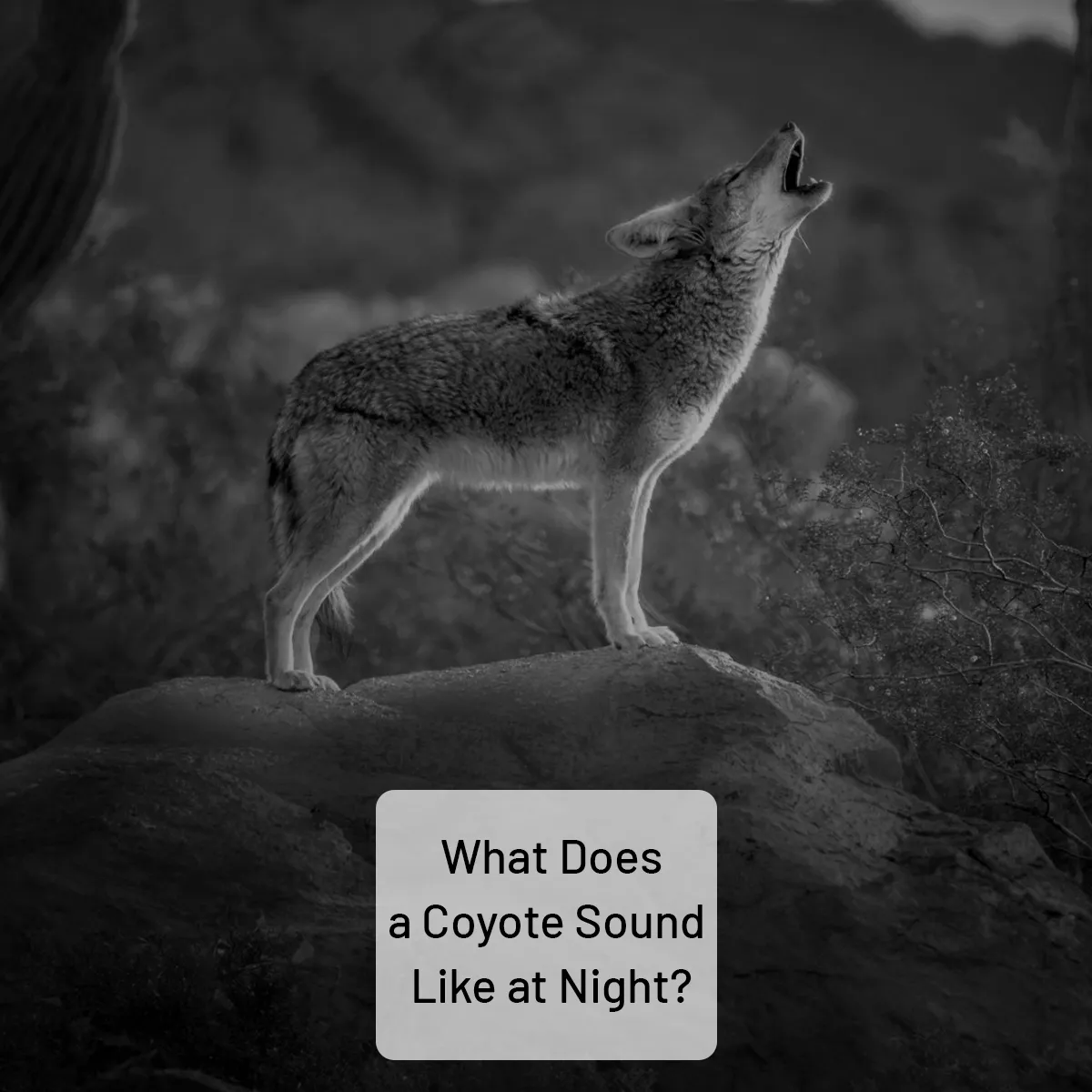What does a coyote sound like at night?
The Songs of the Prairie Wolf: Understanding Coyote Vocalizations
Across the moonlit landscapes of North America, the iconic howls and yips of coyotes carry through the night air. Though often portrayed as eerie nocturnal serenaders, coyote vocalizations actually serve many down-to-earth purposes. Coyotes use various barks, howls, and other sounds to defend territories, gather for hunts, raise their young, and more. Learning to decode the wide repertoire of coyote calls can provide insight into these intelligent canids.

The Clever Canid
The coyote is a mid-sized member of the dog family Canidae, which also includes wolves, foxes, jackals, and domestic dogs. Coyotes resemble small German Shepherds with rusty gray or tan fur, large pointed ears, and bushy tails. Though once limited to the Great Plains, coyotes now range from Alaska to Central America thanks to their adaptability.
Coyotes thrive on varied diets of small mammals, birds, reptiles, fruit, and even fish. They often hunt alone or in pairs, using stealth and speed to take down prey. Coyotes rely on vocal communication to coordinate their hunts and other activities. Their complex language and social nature gives them an advantage over solitary predators.
Defending the Den
Coyotes fiercely defend their home territories of 10-30 square miles. When patrolling their turf, a coyote will howl to warn away trespassers from neighboring packs. Howling broadcasts a coyote's presence, reinforcing boundaries and preventing outright conflict.
Coyote pairs also use dens to raise pups, hiding them in hollow logs or underground burrows. If predators threaten the den, coyotes will misdirect them with rapid movement and distracting howls. They draw the predator away from the pups until the immediate danger passes.
The Hunt is Afoot
Before embarking on a hunt, coyotes use howls and short yips to signal their location to pack mates. This allows them to surround prey animals like deer or flush small mammals from hiding.
Coyotes may even howl to disorient prey with "freezing fear" before attacking. Vocal coordination allows coyotes to successfully bring down prey larger than themselves.
Song and Dance Under the Moon
On bright moonlit nights, coyotes gather in open areas to socialize and strengthen bonds. They greet, groom, and play with pack mates while yipping excitedly. The gathering often culminates in a deafening chorus of barks, howls, and yips called a "group howl". These carnival-like social gatherings may help maintain unity and exuberance among coyote packs.
Submission and Aggression
Softer whimpers, whines, and yips communicate submission, hunger, or injury among coyotes.
Conversely, aggressive woofs, barks, and growls warn intruders away from dens or food sources. These signals allow coyotes to display dominance while avoiding unnecessary violence.
The Master Impersonators
Coyotes have a preternatural ability to mimic the sounds of other animals. They can credibly imitate dogs, livestock, birds, and even human voices. Some urban coyotes have learned to mimic sirens and other city sounds. It's believed mimicry helps coyotes identify food, friends, and threats.
Decoding the Song Dog
The wide range of vocalizations allows coyotes great flexibility in organizing their social lives.
From softly whimpering pups to exuberant group howls under the moonlight, coyote calls convey a wealth of information to those who learn their language. The next time you hear mysterious yips and howls in the night, take a moment to appreciate the poetry in the coyote's primordial serenade.






